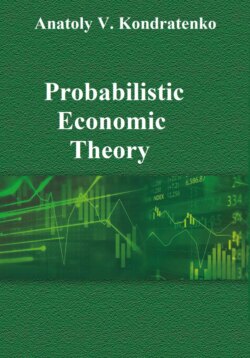Читать книгу Probabilistic Economic Theory - Anatoly Kondratenko - Страница 7
PART A. The Agent-Based Physical Modeling of Market Economic Systems
CHAPTER I. Fundamentals of the Method of Agent-Based Physical Modeling
1. The Concept of Agent-Based Physical Modeling
ОглавлениеIt is well-known that the method of conceptual modeling of economic systems has long and widely been used in economic theory. According to the new physical economic mode of thought, the main requirement for such economic models, which determines their basic predestination, is skill, with which several important basic concepts and principles must harmoniously, competently and simultaneously be incorporated into the theory. The latter is very important since, by the definition of the problem, all concepts and principles play roles that compare their significance in the economy under study.
Despite their simplicity, the first and most well-known conceptual theories of neoclassical economics, such as supply and demand (S&D below), contributed significantly to economic science. They helped economists to better understand the basic elements of the economic world, and they gave rise to graphic conceptualizations that aided the transfer of this knowledge to others, especially students. Early on, conceptual modeling had, and continues to have, great significance. This is also the case in Austrian economics, where it bears the name method of imaginable constructions and it is considered as the basic method in economic inquires. In theoretical physics, it is not acceptable to accentuate attention on the use of models, since theoretical physics itself can rightfully be considered as the conceptual mathematical modeling of physical systems. Specifically, in theoretical physics, the most advanced methods of theoretical modeling of complex systems have been developed. Moreover, there is the required inclination towards conducting the quantitative numerical, and, as precisely as possible, calculations of structure and properties of these models. The deep structural and dynamic analogies between the many-particle physical systems and the many-agent economic systems are exploited in this book to transfer concepts and analytical methods from theoretical physics to economics.
